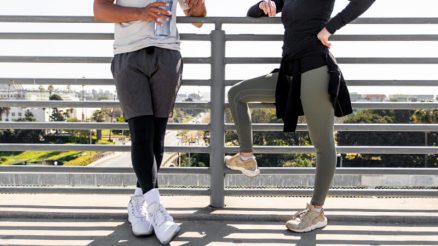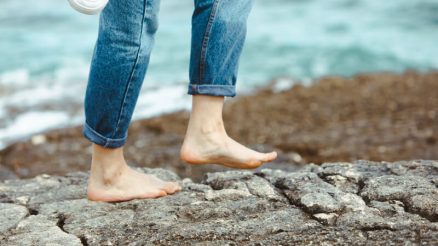Walking is one of the most accessible and beneficial forms of exercise. It’s great for your heart, joints, and mood. But did you know that picking up your walking speed can significantly amplify these benefits? Faster walking can burn more calories, improve cardiovascular fitness even further, and get you to your destination quicker!
However, like any exercise, increasing intensity requires a smart approach to avoid injury. Here’s how you can safely and effectively increase your walking speed.
Why Speed Up Your Walk?
Before we dive into the “how,” let’s quickly touch on the “why”:
- Enhanced Cardiovascular Health: A brisker pace elevates your heart rate more, strengthening your cardiovascular system.
- Increased Calorie Burn: Walking faster expends more energy, aiding in weight management.
- Improved Endurance: As you speed up, your stamina and overall fitness improve.
- Time Efficiency: Get a more effective workout in less time.
The Foundation: Master Your Form
Before you even think about speed, ensure your walking form is solid. Poor form at a faster pace is a recipe for aches and pains.
- Head Up, Eyes Forward: Look about 10-20 feet in front of you, not at your feet. Keep your chin parallel to the ground.
- Relaxed Shoulders: Avoid hunching. Keep your shoulders down and back, relaxed.
- Engage Your Core: Gently pull your belly button towards your spine. This supports your back and helps propel you forward.
- Bent Elbows: Keep your elbows bent at roughly a 90-degree angle.
- Arm Swing: Let your arms swing naturally back and forth from your shoulders, not across your body. They should work in opposition to your legs (left arm forward with right leg forward).
- Heel-to-Toe Roll: Land lightly on your heel, then smoothly roll through your foot to push off with your toes.
- Slight Forward Lean: Lean slightly forward from your ankles, not your waist. This helps with momentum.
The Progression: Gradually Increase Your Speed
Safety is paramount. Don’t jump from a leisurely stroll to a power walk overnight.
- Establish Your Baseline: For a week or two, just walk at your current comfortable pace, paying attention to your form. Note your average speed or how long it takes you to cover a certain distance.
- Incorporate Brisk Bursts (Interval Training): This is an excellent way to introduce speed.
- Start your walk with a 5-minute warm-up at a comfortable pace.
- Then, for 1-2 minutes, pick up your pace to a “brisk” level – where you can still talk but feel slightly breathless.
- Return to your comfortable pace for 3-5 minutes.
- Repeat these intervals for the duration of your walk, finishing with a 5-minute cool-down.
- As you get fitter, gradually increase the length of your brisk intervals and/or decrease the length of your recovery intervals.
- Increase Overall Pace Gradually: Once you’re comfortable with intervals, start extending the duration of your faster walking. Aim to increase your overall walking speed by a small percentage (e.g., 5-10%) each week or every couple of weeks.
- Use a Pedometer or Fitness Tracker: These tools can help you track your speed (pace) and distance, providing valuable feedback on your progress.
Techniques to Boost Your Speed
Beyond just trying to move faster, specific techniques can help:
- Slightly Shorter, Quicker Strides: Instead of taking longer strides, focus on taking slightly shorter, more rapid steps. This can feel more efficient and less taxing on your joints.
- Increase Arm Drive: Your arms are powerful accelerators. A stronger, more purposeful arm swing can naturally increase your leg turnover.
- Engage Your Glutes and Hamstrings: Consciously push off with your glutes and hamstrings rather than just relying on your calves. This will give you more power.
- Imagine You’re Late (without actually being late!): Sometimes just having a mental cue can help you pick up the pace naturally.
Listen to Your Body and Prioritize Safety
- Warm-up and Cool-down: Always begin with 5 minutes of easy walking and end with 5 minutes of easy walking and gentle stretches.
- Hydration: Drink plenty of water before, during (if it’s a longer walk), and after your walk.
- Appropriate Footwear: Wear supportive, comfortable walking shoes that fit well.
- Pain vs. Discomfort: It’s normal to feel some muscle fatigue or slight breathlessness as you increase intensity. However, sharp pain is a sign to stop and rest. Don’t push through pain.
- Vary Your Terrain: Walking on different surfaces (trails, pavements, slight inclines) can challenge your muscles differently and prevent overuse injuries.
- Rest and Recovery: Give your body time to recover, especially when starting a new routine. Don’t try to increase speed every single day.
Increasing your walking speed is a fantastic goal that can significantly enhance your fitness journey. By focusing on proper form, gradual progression, and listening to your body, you can safely pick up the pace and reap the abundant rewards of a brisker walk. Happy stepping!








